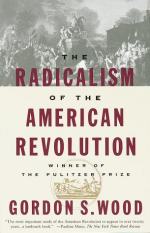|
This section contains 497 words (approx. 2 pages at 400 words per page) |

|
Part 1, Chapter 2 Summary and Analysis
The ancient social cleavage between the few (gentlemen/ patricians) and the many (commoners/ plebeians) exists in America. In the southern colonies, the aristocracy comprises 4-5% of the population. In the North, it approaches 10%. By birth and fortune, they are expected to govern the rest. By colonial times, gentlemen form a middle rank between nobles and commoners. With the aristocracy not defined and locked by law as in France, England allows social mobility, as noble titles are lost to all but the eldest son.
All men are patently not created equal. Birth and parentage matter greatly, as does wealth; but a rich person devoid of manners, taste, and character is not a gentleman. Gentlemen must be noticed living grandly and free from all material and intellectual want. At mid-century, many revolutionary leaders are stereotyping and deriding the masses' intelligence, outlook...
(read more from the Part 1, Chapter 2 Summary)
|
This section contains 497 words (approx. 2 pages at 400 words per page) |

|




